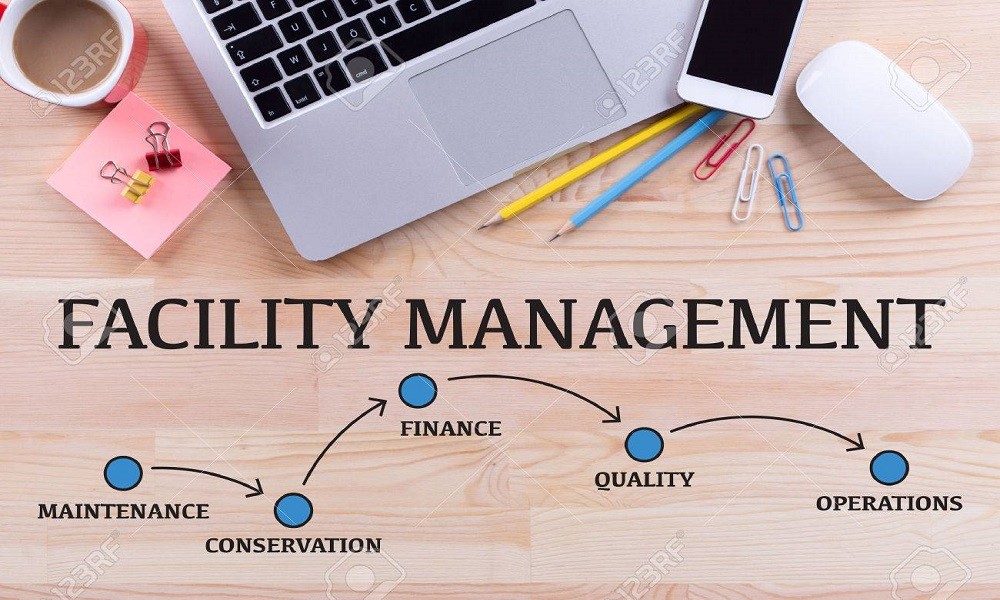I still remember the Tuesday morning I met a couple in Leeds who almost walked away from property investing for good. They had paid a sizeable fee to a so called deal sourcer who promised below market value flats and effortless passive income. What they got instead was a glossy brochure, vague numbers, and a vendor who never actually existed. We sat over coffee, unpacked the mess, and rebuilt their plan step by step. Stories like that are exactly why thorough vetting matters. If you are considering using a sourcing and advisory partner, take a breath and put process before promises. If you want a trusted starting point that aligns with ethical and hands free investing, have a look at Emaan Investments.
What a deal sourcer actually does
A professional property sourcer acts as your field team. They identify opportunities, analyse the numbers, negotiate with vendors or agents, and package the key information you need to make a go or no go decision. The best do much more than send links. They validate rental demand, forecast conservative yields, flag licensing and planning issues, cost the refurbishment line by line, and outline realistic timescales. Many also support you through conveyancing, finance and post completion management to make sure the asset starts performing from day one. Done right, a source and advise relationship can compress months of legwork into weeks and remove a lot of noise. Done badly, it can lock in poor decisions that take years to unwind.
Why vetting your sourcer protects returns
Property is a game of thin margins. A purchase price five per cent too high, a rent that is £75 per month below forecast, or a refurb that runs ten per cent over can be the difference between a solid deal and a money pit. Investors often chase headline yields and forget to interrogate the inputs. A credible sourcer is defined not by how exciting the headline looks, but by the quality of their evidence and the strength of their governance. Ask yourself three questions. Are they compliant. Are their incentives aligned with yours. Do they welcome scrutiny. If any of those answers is shaky, your returns are at risk before you have even instructed a solicitor.
The compliance essentials you need to see
In the UK, anyone who is in the business of introducing buyers to sellers for a fee falls within the scope of estate agency activity. That brings clear responsibilities. You should expect to see proof that the sourcer is supervised for anti money laundering, that they are a member of an approved redress scheme, and that they carry professional indemnity insurance. If they hold client money at any stage, ask about client money protection and how funds are ring fenced. You also want to see a proper letter of engagement that sets out fees, refund policies, and the circumstances in which the fee becomes payable. A privacy notice and data handling policy should be provided without prompting. Good operators keep these documents in a single compliance pack and send them before talking numbers.
Fees and the incentives that sit behind them
Sourcing fees are usually charged as a fixed amount or a small percentage of purchase price. For standard buy to let, fixed fees often sit in the low thousands. Percentage models frequently range around one to three per cent for single lets and slightly higher for complex assets. Beware of fee structures that encourage the wrong behaviour. If a sourcer earns most when you reserve quickly, you may be nudged to commit before legal due diligence has surfaced any issues. If fees are all paid upfront, you carry all the risk while they have none. Where possible, structure payments in stages tied to real progress, such as an accepted offer, satisfactory legal searches, valuation at or above price, and exchange of contracts. If a sourcer refuses staged fees as a principle, ask why. Misaligned incentives show up earliest in the fee schedule.
The anatomy of a high quality deal pack
A serious sourcer presents a clear, conservative, and complete picture. Expect a full address and ownership checks, photos taken by a human on site, a breakdown of local comparables with dates and sold prices, rent evidence from live listings and achieved rents, a realistic void assumption, a costed refurb schedule with contingency, a yield and cash flow that includes all fees and taxes, and explicit notes on licensing, EPC position, and planning. Good packs include sensitivity analysis to show how the deal performs if rents are five per cent lower or refurb is ten per cent higher. They also spell out the downside. If the pack assumes a quick flip or refinance, it should show what happens if the valuation comes in short or if mortgage rates stay higher for longer. Optimism belongs in marketing. Numbers live in reality.
A field story about incentives and red flags
Back to that Leeds couple. Their pack looked immaculate. Crisp images. Big bold yields. What gave it away was the absence of dull detail. No vendor name. No title plan. No proof the EPC actually existed. The sourcer pushed for a reservation on the same day with a countdown timer in the email. When we reached the supposed conveyancer, the number bounced. Within a week we had replicated the pack from public data and a quick street level inspection. The refurb budget was at least thirty per cent light. The rent was overstated by around £100 per month. It took three phone calls to discover that the vendor had withdrawn months earlier. The couple got their reservation fee back eventually, but only after threatening legal action. A lot of pain. All preventable with a firmer vetting process at the start.
Due diligence you can apply to any sourcer
To make this practical, here is a single checklist you can reuse. It is deliberately simple and focused on what protects your capital.
• Verify regulatory basics – AML supervision, redress membership, professional indemnity, and any client money protection if they hold funds. Ask for certificates and policy numbers.
• Ask for the engagement letter – it must set fees, payment triggers, refund policy, and cancellation terms.
• Demand full addresses – no blurred locations or partial postcodes. You are buying a property, not a mystery box.
• Rebuild the numbers – check comparables, rebuild the yield, insert a void allowance, and stress test with lower rent and higher costs.
• Inspect the refurb scope – insist on itemised costs, labour rates, timeframes, and contingency of at least ten per cent.
• Test rent demand – call two local agents posing as a landlord and ask for achievable rent on that exact street.
• Confirm legal hygiene – ask about title issues, restrictive covenants, planning constraints, and whether any Article 4 directions affect use.
• Look for EPC and compliance – where is the current rating, and what capex is needed to meet upcoming standards.
• Probe the sourcing channel – genuine direct to vendor, or simply an agent’s listing. Either is fine if transparently disclosed.
• Stage the fee – pay small to reserve, then larger amounts only after valuation and legal milestones.
• Insist on timelines – offer, survey, legals, completion. Vague timelines equal vague control.
• Meet the refurb team – if turnkey is offered, meet the contractor and see previous jobs.
• Ask for case studies – real addresses, outcomes against plan, and client references you can call.
• Confirm post completion support – who handles keys, letting, compliance certificates, and snagging.
• Walk away if rushed – pressure is the oldest red flag in the book.
Social housing deals need a deeper lens
If you are exploring social housing leases or supported accommodation, step up the scrutiny. Start with the housing provider’s track record, regulatory status, and audited accounts if available. Ask about the lease length, the indexing method, and any break clauses. Clarify repairing obligations with precision. In some leases the landlord is on the hook for structural items while the provider handles internal maintenance. In others the balance is reversed. Understand the void risk and who covers it. Make sure the rent level is sustainable within local authority rates, not just in year one but across the lease term. Check whether any top up payments are required and who is responsible if policy changes. Confirm that fire safety, licensing, and care commissioning standards are fully met. The appeal of guaranteed rental income is real, but the guarantee is only as strong as the entity and contract behind it.
Hands free and turnkey – what to expect in practice
Hands free is not code for hands off. A good partner removes friction but keeps you in control of decisions. In a turnkey model, you should receive a written scope, a build programme, interim photos, and a final pack of certificates. Letting should be planned before completion with pre marketing in the final fortnight of the refurb. Management terms must be clear on repairs authorisation limits, inspection frequency, arrears processes, and reporting. For new landlords, that rhythm is invaluable. It is also where a poorly aligned sourcer can cause the most frustration. If the people who sold you the asset disappear after the keys are handed over, you are dealing with a broker, not a partner.
How to read yield and cash flow claims
Headline yields can distract. Replace them with cash flow you can bank. Factor in finance costs using realistic rates and stress tests. Include landlord insurance, compliance certificates, licence fees where applicable, safety checks, management fees, and a real void allowance. For many vanilla buy to let properties, a management fee in the low teens per cent of monthly rent is a fair planning number. Refurb projects should include both a contingency and an allowance for time on market. If you are shown a social housing deal, replace standard void and arrears assumptions with lease terms and provider covenants, and then ask what happens in the event of lease termination. Cash flow is an outcome of assumptions. Your job is to challenge those assumptions until they are dull and defensible.
Off market and pre vetted – what those labels should mean
Off market should mean direct to vendor or introduced via a trusted intermediary before public marketing. It should not mean a Rightmove listing with the address redacted. Pre vetted should mean that someone has stood in the kitchen, checked the consumer unit, looked at the roof line, measured rooms, and verified the EPC. It should mean comparables were pulled that actually match the subject property and that the vendor’s circumstances support the proposed discount or timescale. As a magazine editor I see a lot of packs that use those phrases loosely. As an investor, demand they are used precisely.
The value of a true advisory relationship
This is where a firm like Emaan shines. An advisory led approach starts with objectives and constraints. Your capital, time horizon, risk tolerance, and desired involvement are mapped first. Only then are locations, asset types, and strategies shortlisted. If social housing with long term leases suits your need for predictable income, the search filters reflect that. If hands free single lets with strong fundamentals are better, the focus shifts to resilient rental demand and stable exit values. Sourcing is then executed against that brief, not the other way around. It is a subtle difference that protects investors from fashionable distractions.
What working with Emaan Investments looks like
When readers ask how we structure an end to end journey for busy professionals, the steps are straightforward. We start with a call to understand goals and available capital. From there we present a written brief and a shortlist of locations that match your criteria. We source opportunities, build conservative appraisals, and talk you through risks and mitigations. Once you choose a direction, we negotiate, help you instruct solicitors and brokers, and coordinate surveys. During refurb we manage programme and cost visibility with weekly updates. Letting and management are set up early so there are no gaps at the handover. Portfolio reviews are scheduled to keep the bigger picture on track. If you want a simple way into this model, explore our property sourcing and advisory service.
Regional focus – a word on Yorkshire and Leeds
Investors often ask whether to chase the next big hotspot or stick to steady regions with strong fundamentals. My bias is to favour markets with diverse employment, established universities, and long term infrastructure investment. That is part of why Yorkshire and Leeds keep cropping up in professional conversations. Tenant demand is broad based, rental affordability tends to be better than in the South, and the stock offers options across budgets. None of that removes the need for granular due diligence. Street by street analysis still wins. It does, however, give you a strong foundation on which to apply the vetting framework above.
Common red flags to walk away from
Several patterns repeat. Sourcers who refuse to disclose a full address before a reservation fee. Packs that rely on future planning consent but present the deal as if consent already exists. Rent assumptions pulled from the top end of current listings with no allowance for negotiation. Refurb scopes that assume day rates for complex tasks or ignore VAT. No written refund policy. Non existent or generic references. Pressure tactics that say five other investors are ready to pay. You do not need to argue with any of these. You need to say thank you, and move on.
How to protect your downside even further
There are small habits that separate professional investors from enthusiastic beginners. Never rely on one person’s numbers, not even your advisor’s. Rebuild the deal in your own spreadsheet. Speak to at least two letting agents to triangulate rent. Visit the street. Check for new build developments nearby that could change supply. Scan planning portals for signs of large HMOs if you are buying a family let, or vice versa. If a deal involves a lease, read it slowly and have a solicitor explain the parts written in dense legalese. If the investment hinges on a refurb, get a second contractor to price the same scope. A week spent pressure testing assumptions is a small price for years of calmer ownership.
Turning lessons into leverage
When the Leeds couple re entered the market, we built a more robust approach. They chose single let houses in commuter belts with strong schools and simple refurbs. We used a staged fee structure with the sourcer and insisted on addresses and documentation upfront. Each appraisal was rebuilt from scratch and stress tested before offers went in. Within twelve months they owned three properties that performed within a whisker of plan. No fireworks. No drama. Just well bought assets in sensible locations. That is the quiet power of process.
Final thoughts and next steps
If you remember one thing from this guide, make it this. A trustworthy sourcer is as proud of their process as they are of their results. They are happy to be challenged, quick to share documents, and careful with language. They know that the best property investments are built on evidence and alignment, not urgency and adjectives. If you want a partner that lives those values and can help you move from research to ownership with confidence, speak to Emaan Investments.













